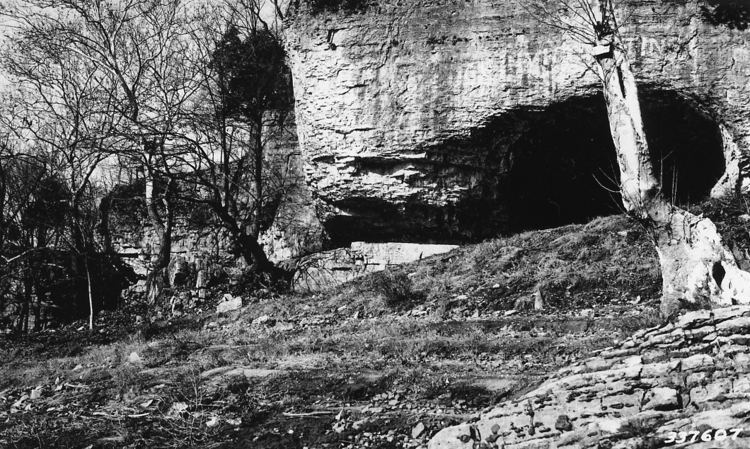Nationality American Name James Ford | Role Pirate | |
 | ||
Occupation justice of the peace, ferry operator, criminal gang leader, prominent land and slave owner, state militia officer, river pirate, slave stealer, kidnapper, slave trader Known for Being a pillar of the community and secretly, the criminal leader of the Ford's Ferry Gang, along the Ohio River Died July 7, 1833, Tolu, Kentucky, United States | ||
James Ford, born James N. Ford, also known as James N. Ford, Sr. the "N" possibly for Neal (October 22, 1775 – July 7, 1833), was an American civic leader and business owner in western Kentucky and southern Illinois, late 1790s to mid-1830s. Despite his clean public image, as a "Pillar of the Community", Ford was secretly a river pirate and the leader of a gang that would come to be known as the "Ford's Ferry Gang". His gang was the river equivalent of highway robbers; they would hijack flatboats and Ford's "own river ferry" for tradable goods from local farms, coming down the Ohio River. Ford was an Illinois associate of Isaiah L. Potts and the Potts Hill Gang, highway robbers, of the infamous Potts Tavern. James Ford also had an association with illegal slaver trader and kidnapper of free blacks, John Hart Crenshaw and may have taken part in the Illinois version of "Reverse Underground Railroad. At one point, they used the "Cave-in-Rock" as their headquarters, on the Illinois side of the lower Ohio River, which is approximately 85 miles below Evansville, Indiana.
Contents
- Early life
- Marriages and children
- Criminal activities
- Criminal associates
- Military service
- Property
- Slave holding and allegations of illegal slave trading
- Similarities of James Ford and the Fords Ferry Gang to Henry Plummer and the Innocents
- References
Early life
James Ford was the son of Philip Ford and Elizabeth Ford and the grandson of John Ford. He had two brothers, Philip Jr. and Richard. His father died while he was young and his mother remarried, to William Prince, who brought the family out to what would become Princeton, Kentucky. This second marriage would provide James with a number of step and half siblings who would provide important ties to his future political and criminal career.
Marriages and children
In the late 1790s, James Ford married Susan Miles, the daughter of William Miles, brother of the ferry keeper, at Miles Ferry, which connected the Kentucky and Illinois banks, of the Ohio River, down river of Cave-in-Rock, near the future location of present-day Rosiclare, Illinois. Susan Ford bore James two sons, Philip (November 25, 1800 - November 23, 1831) and William M. (1804 – November 2, 1832), and one daughter, Cassandra (1805/1806–1863). Susan died, sometime, in the 1820s and in 1829 Ford married Elizabeth "Betsy" W. Armstead Frazier (1790-1800 - 1834-1835), a widow whose husband had died suddenly while staying at Ford's plantation, in what was then Livingston County, Kentucky and now Crittenden County, Kentucky. Elizabeth Ford bore James one son, James N. Ford, Jr., (c. 1830 - October 1844).
Criminal activities
James Ford had settled on the Kentucky side of the Ohio River by the late 1790s, when Samuel Mason's river pirates operated out of Cave-in-Rock. Early writers identified him with the "James Wilson" who operated a tavern and brothel in the cave in the spring of 1799, but these are now believed to be incorrect, since historical records show that a man named James Wilson lived in the area at the same time as Ford.
Criminal associates
Military service
Property
James Ford was a substantial land owner and held numerous properties on the Kentucky and Illinois sides of the Ohio River and also, owned many slaves. Through his first wife's family he secured the rights to the Miles Ferry, which soon became known as Ford's Ferry, though this is not the infamous one he operated later, upriver from Cave-in-Rock, called Ferry Ohio. Through his second marriage, he secured control of the Frazier Salt Works, at the Lower Lick Great Salt Springs, in the Illinois Salines in Gallatin County, Illinois, during the late 1820s.
Slave-holding and allegations of illegal slave trading
James Ford owned a considerable number of slaves in Kentucky, as well as Illinois, around the U.S. government Saline, in Equality. His influence was felt as far away as Springfield, Illinois, which can be attested to in the Sangamo Journal newspaper, where he ran a fugitive slave notice, with detailed physical descriptions of three runaway slaves he owned. The cruel and ruthless treatment Ford showed toward his slaves was told in a story of how he bound a supposedly offending slave and dragged him to death behind a mule, through a field of tree stumps. James Ford was also alleged to be a business associate of Illinois saltworks operator and illegal slaver trader on the Reverse Underground Railroad with John Hart Crenshaw of Equality, Illinois involving the kidnapping and enslavement of free negros in Illinois and selling them in Kentucky, to slave plantations in the American South.
Similarities of James Ford and the Ford's Ferry Gang to Henry Plummer and the Innocents
From 1863-1864, Henry Plummer was the elected sheriff of the gold rush town, Bannack, Montana, in Idaho Territory. He was later, accused of being the leader of an outlaw gang, the Innocents, who stole gold shipments from Bannick, and was hanged by Bannick vigilantes.
